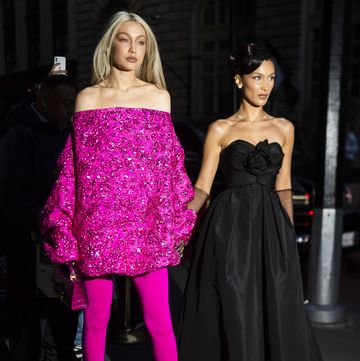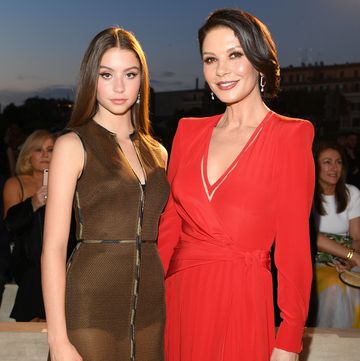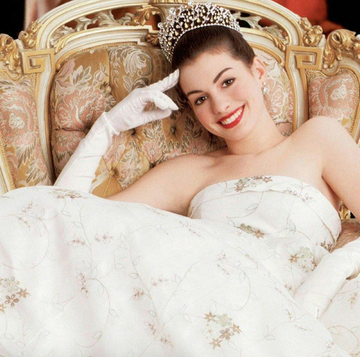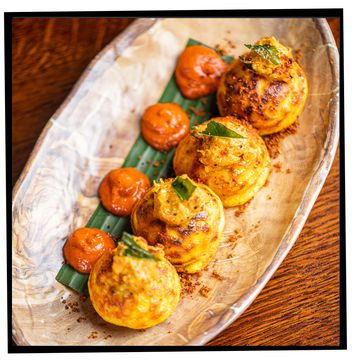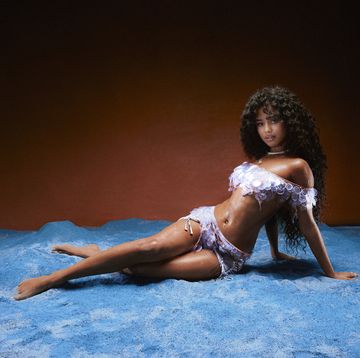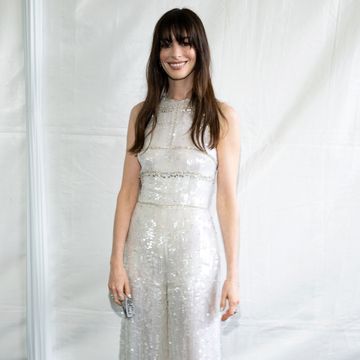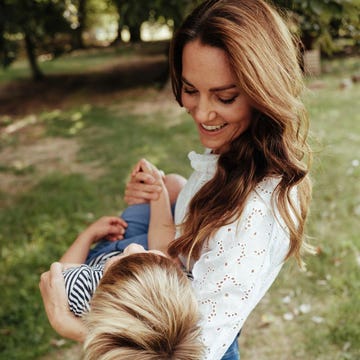Recently, I decided to host a dinner party. I moved out of London a few months ago and had a baby, so basically I wanted to prove to my friends that I was still relevant. But, as soon as I had the idea, I dismissed it – because catering to their new and bizarre dietary requirements would have been too painful.
One of my friends is low-carbing. Another has gone gluten-free (but admits that she couldn’t even remember why she’d stopped eating bread). A third friend is now ‘paleo’ and only eats red berries and grass-fed buffalo. And yet another has vetoed refined sugar. Those bastards. I was going to make lasagne and profiteroles.
It’s clear that I need new friends. I can no longer be seen with someone who arranges chia seeds (whatever those are) on a vintage plate and then Instagrams them into oblivion with about 500 #glutenfree, #sugarfree and #paleo hashtags.
Now, I am all for dietary diversity, but I think this needless weighing of grains and health-food-shop-bothering is a little, well, joyless. It’s 2015 – the date that Back To The Future Part II predicted we’d all be zipping about on hoverboards. And yet here we are, still policing our food like a catty secretarial pool during the macrobiotic diet craze of the Eighties. It’s a sorry state for womanhood when the sheer jubilance of diving into a hot bowl of cheesy pasta has become social anathema.
Sadly, this is no longer fringe behaviour. That difficult friend, the menu-dissecting fussy eater, has gone mainstream and the Joe Schmo jam-and-toast eaters among us are the food weirdos. Restaurants have sprung up to cater for those who’ve done away with carbs and sugar, and even Pizza Hut has started offering a gluten-free pizza base. Sales of UK supermarket ‘free from’ foods have risen by 15% and people are buying 40% more dairy-free alternatives than they were in 2011. Conversely, bread and pasta sales are down by 8.9% and 4.2%, respectively, which analysts say is down to the no-carb trend.
Full disclosure. I have spent half my life wedded to one diet or another, trying fruitlessly to hammer my size-14 frame back down to the size eight I was before I quit smoking. My food weirdness of choice is the good old-fashioned diet. We go way back. I have counted calories. I have survived for months on ‘nutritionally complete’ shakes and soups, then blown my dietary load in a bakery, undoing much of my good work. Recently, though, I’ve taken an interest in balanced nutrition because my six-month-old son has just started on solid food and I don’t want him growing up thinking that granola eaten straight out of the box while still in your pyjamas at 3pm counts as ‘lunch’ (and if you were wondering what I was doing with my maternity leave, there’s an insight for you).
But what is a balanced diet now? The NHS still recommends a mix of carbohydrates and protein with lots of fruits and vegetables, and fewer KitKats than I’m comfortable with. Gwyneth Paltrow however (who starred in Iron Man and therefore is more credible to me) thinks that the road to a healthy-eating nirvana is paved with absolutely no gluten.
The much-maligned gluten is a combination of proteins that gives bread and › pasta dough that pleasing gluey elasticity. People with coeliac disease can’t eat gluten because it causes their immune systems to attack their own digestive tracts, and can even lead to bowel cancer. Only 1% of the UK population has coeliac disease but, according to market- research organisation Mintel, around 7% of people believe they have an undiagnosed intolerance to the stuff, and another 8% avoid gluten to ‘be more healthy’ – most likely mentally lumping ‘gluten-free’ in with terms like ‘vegan’ and ‘organic’ under the vague dietary umbrella of ‘healthy eating’.
My coeliac friend Emily is not a fan of this new gluten-free tourism. ‘One minute people are telling you they’re coeliac too and begging you for your cauliflower pizza-base recipe, and the next it turns out they just fancied stopping eating
gluten for a bit, because now they’re taking a selfie with a Subway footlong. It’s so annoying,’ she says. Conversely, blogger and coeliac Erika Holt is grateful for the
gluten-free demand they’re creating: ‘Before people jumped on the gluten-free train, there was nothing available except for the expensive prescription foods. Now each week there’s a new type of gluten-free food in the supermarket.’
If you don’t have coeliac disease, though, or a diagnosed allergy, cutting out gluten could actually harm you in the long run. ‘A gluten-free diet may adversely affect gut health in those who don’t need to follow it,’ says registered dietitian Rosie Norman. ‘Gluten-free diets are often low in fibre and can be linked to deficiencies in B vitamins, iron and folate.
‘In fact, following any food fad may, ironically, lead to nutritional deficiencies and medical complications.’
Try telling that to Lauren B, a 26-year-old training consultant from London, who has lost over two stone by cutting out carbs. Her plan sounds quite convincing when she evangelises about her clear skin and how much fresh food she gets to eat. But her altered attitude to carbs concerns me: ‘I didn’t worry at all about cutting out a major food group,’ she says. ‘I wouldn’t go back to carb-laden meals every day because I put on weight when I eat them – I’m not a very moderate person. I wouldn’t have eggs on toast or a sandwich, I’d have a sandwich, then chips, then some cake and a chocolate bar. I find it easier to avoid all carbs and just associate them with treats.’
It’s all-or-nothing attitudes like this that some psychotherapists and dietitians worry will lead to a buzz-phrase you may have heard bandied about, orthorexia nervosa, which means an obsession with ‘righteous eating’. In a 2014 Vanity Fair interview, Jennifer Lawrence pooh-poohed the gluten-free trend in Hollywood, calling it ‘the new, cool eating disorder’. Was she on to something?
‘Orthorexia is yet to be formally classified as a recognised psychiatric disorder,’ says Norman. ‘It describes obsessive behaviour with being healthy. It’s characterised by a restrictive diet, ritualised patterns of eating, and rigid avoidance of foods believed to be “unhealthy” or “impure”. It can also lead to anorexia or bulimia.’
‘There is something about control in the obsessive dieter,’ says psychotherapist and broadcaster Philippa Perry. ‘We may be buying into this myth that, “I can control my allotted lifespan and extend it indefinitely so long as I eat quinoa and soya beans.” But is an orthorexic life fun? And do you live longer than someone who just eats normally?’
I put this to my paleo friend who doesn’t dismiss the idea out of hand. ‘Having a plan does lessen my anxiety around food,’ she says. ‘I like having something I can stick to, and I’m perfectly aware that in a few years a scientist will turn round and say that eating paleo has halved my lifespan or something. But on the other hand, I feel the healthiest that I have in years, I have loads of energy, and I’ve shed all my extra body fat.’
So, for approximately 13 seconds, I decide to go paleo.
That’s the problem, you see. It’s all incredibly persuasive. Thanks to the lovingly edited photos of sun-kissed six-packs and courgette spaghetti, the #eatclean Instagram hashtag inspired me to run out and buy a vegetable spiraliser, before realising that I hate courgette and adore, you know, actual spaghetti.
‘Clever marketing may lead people to believe that the food they’re eating is healthier than it actually is,’ says Norman. ‘Instead of demonising single nutrients, or following diet fads, take a broader look at your lifestyle. Eating a variety of wholefoods from all the food groups is key.’
I have another friend, Ellie, who, while all this has been going on, has just been quietly following her own plan – one which allows for lasagne and profiteroles. ‘Oh, I just try and eat a balanced diet,’ she tells me when I ask. When I mention that I haven’t seen her Instagramming any of her food, she gives me a strange look. ‘Why would I Instagram my food?’ she asks. ‘I have a cat.’ ●

